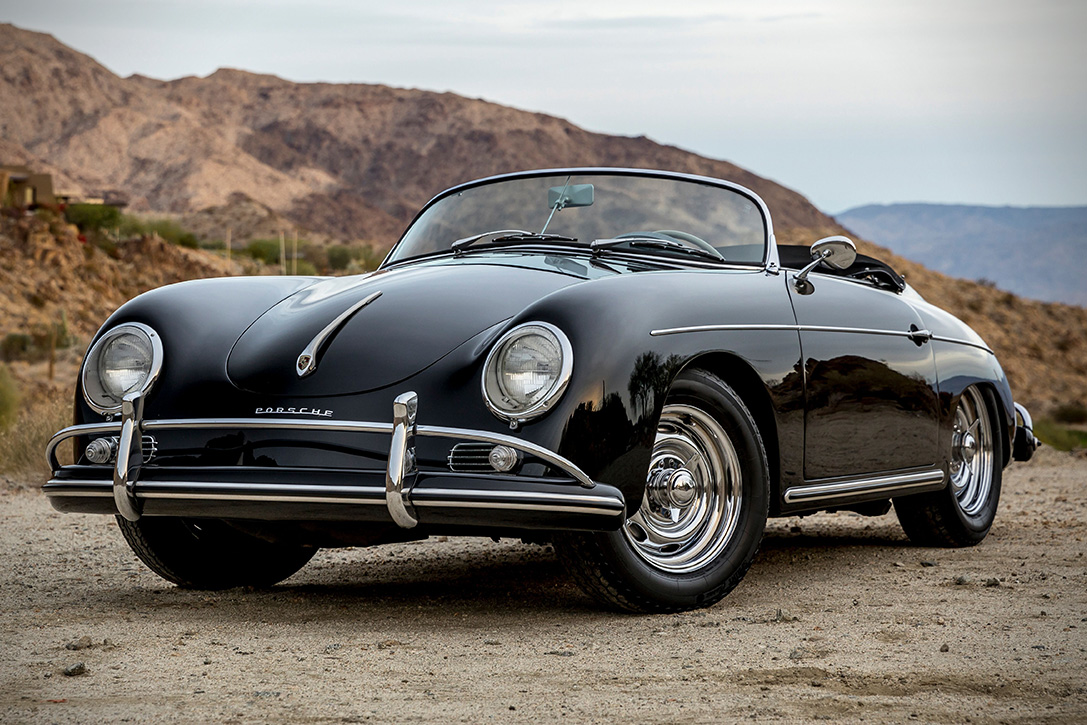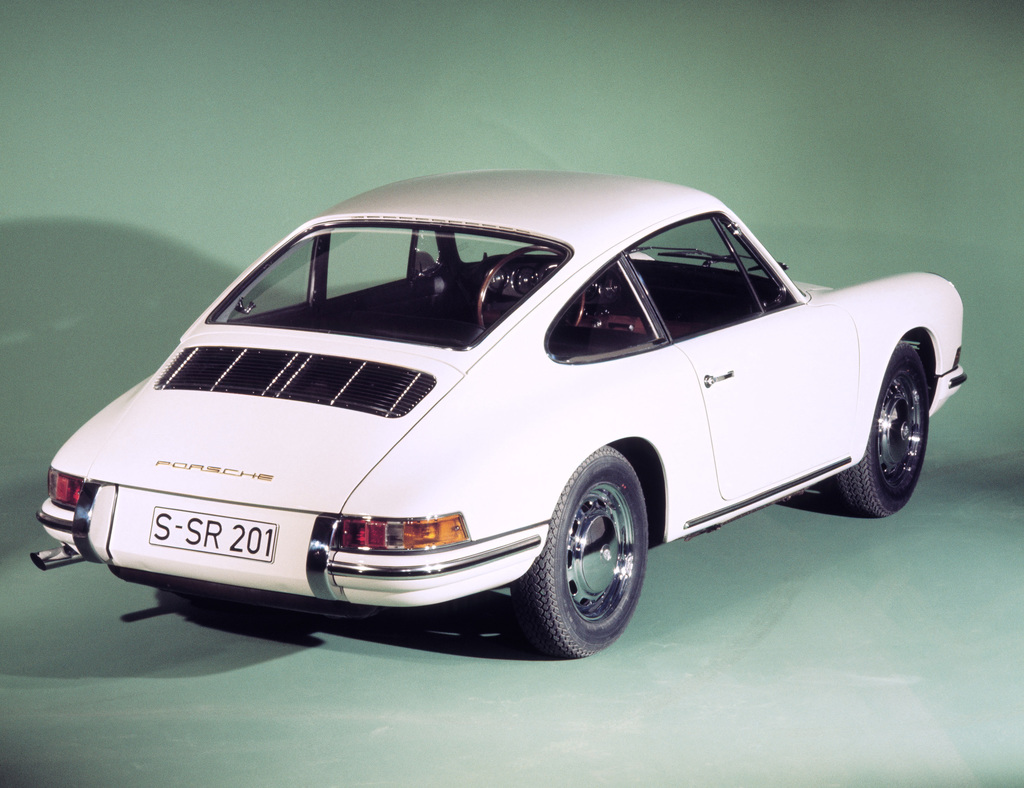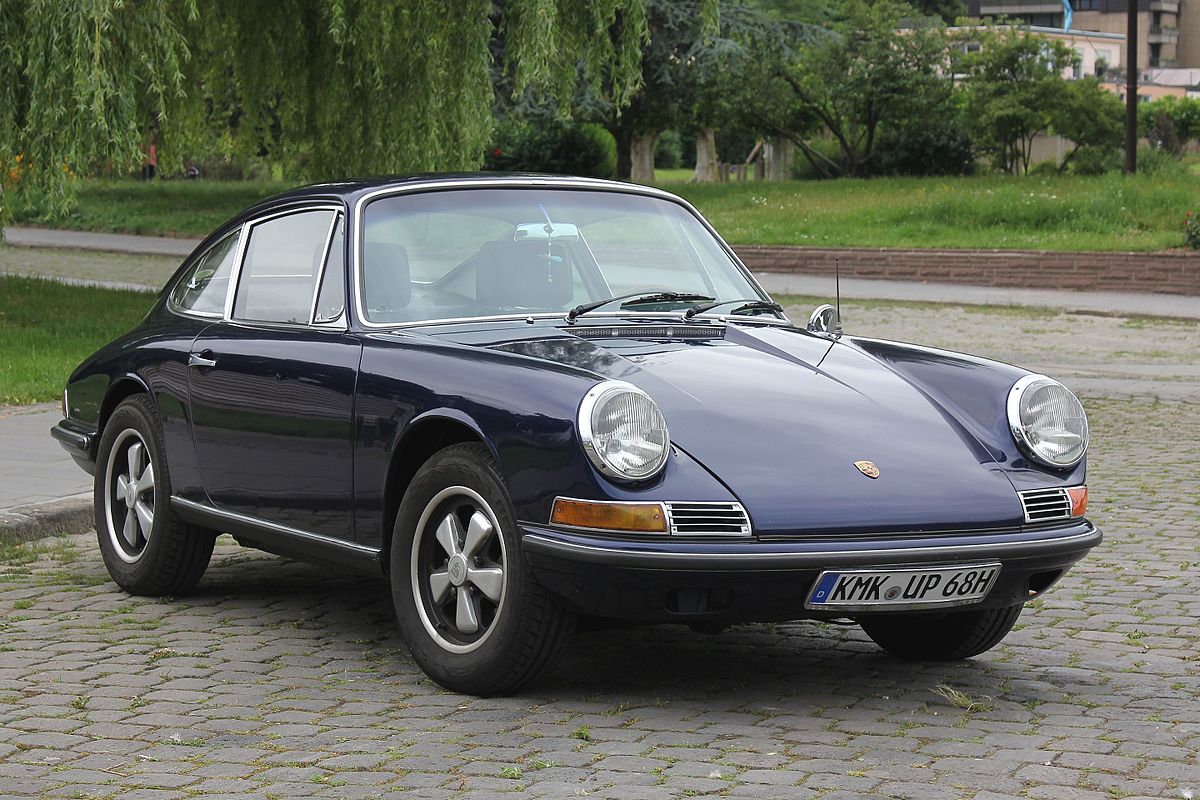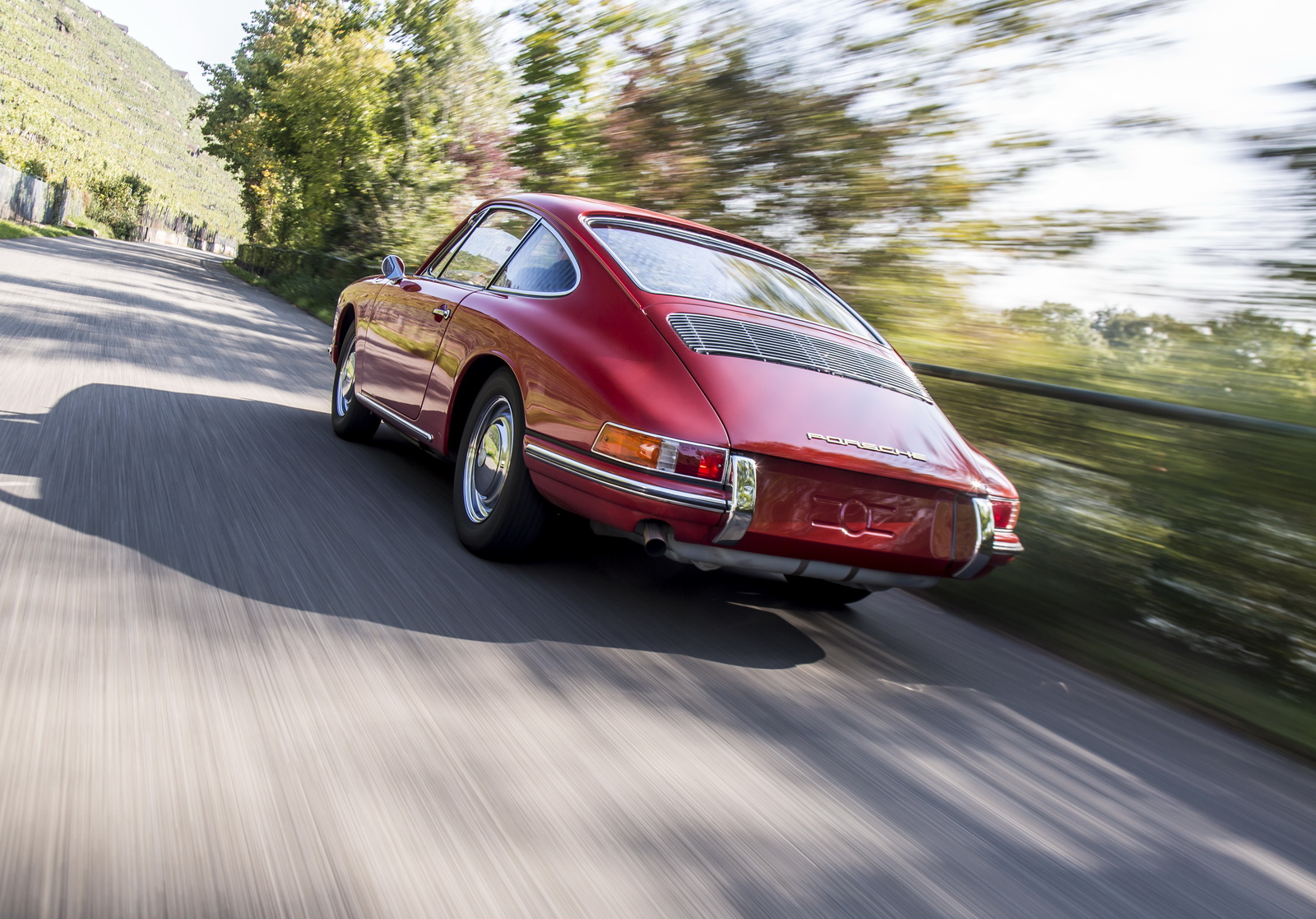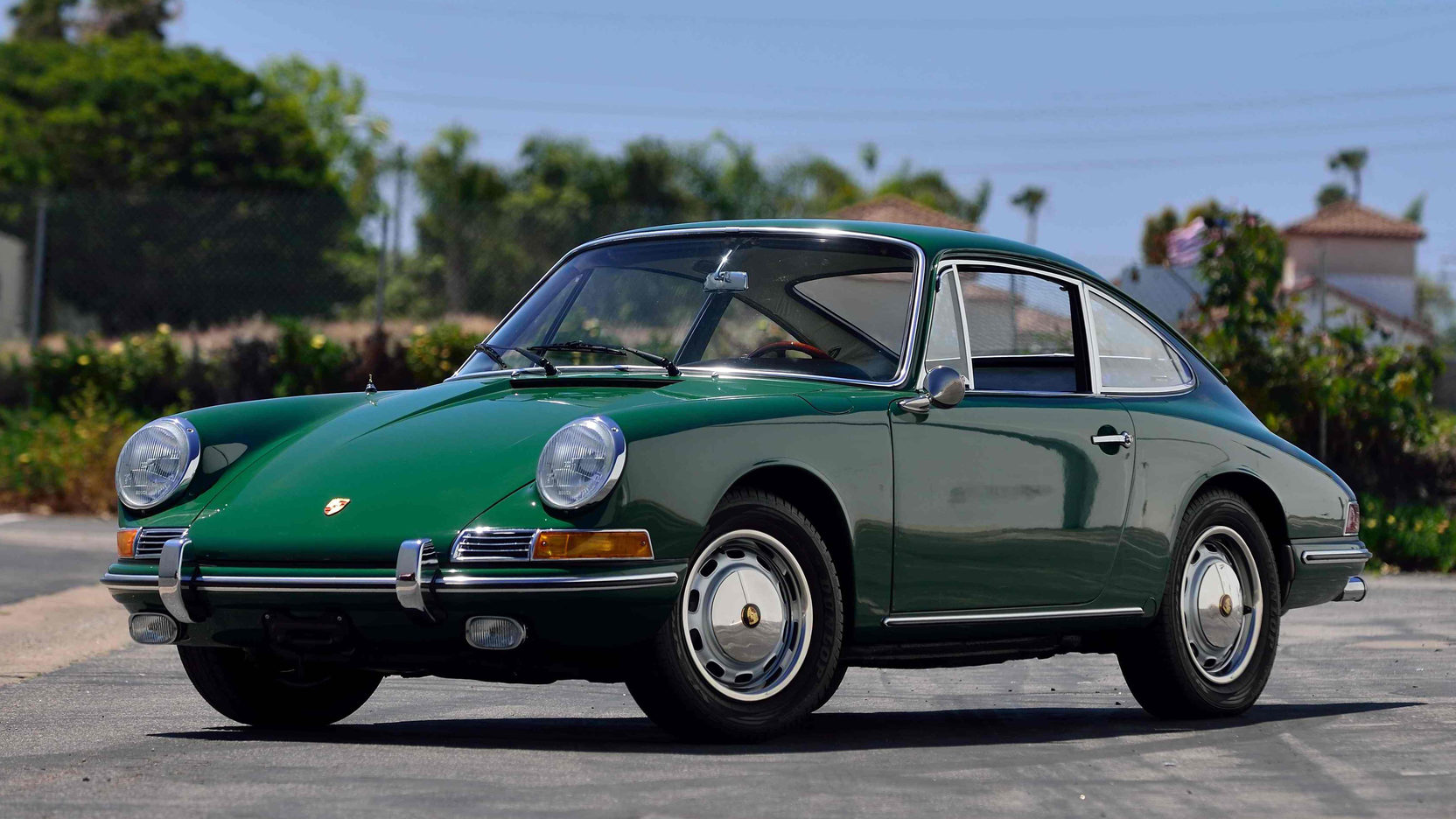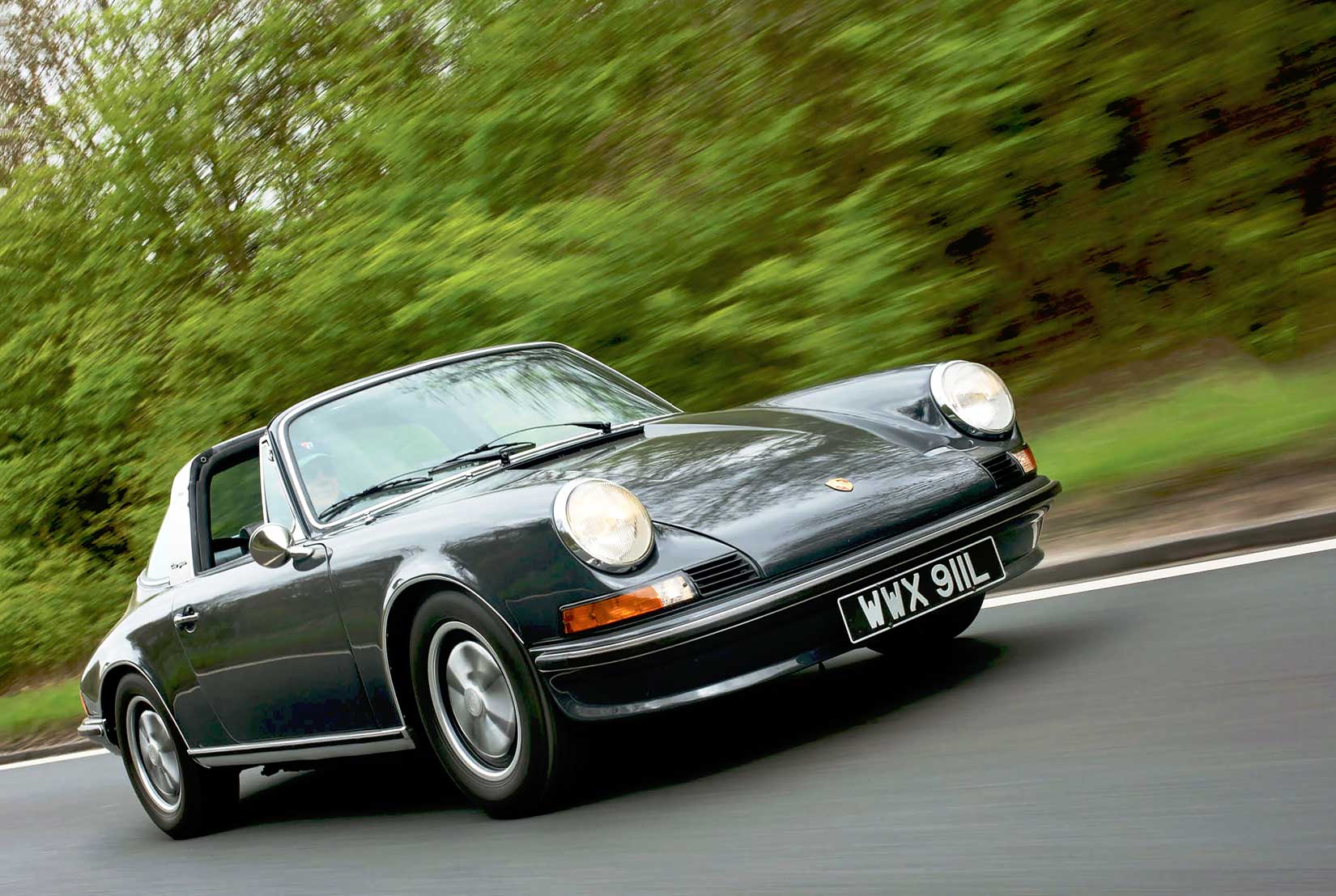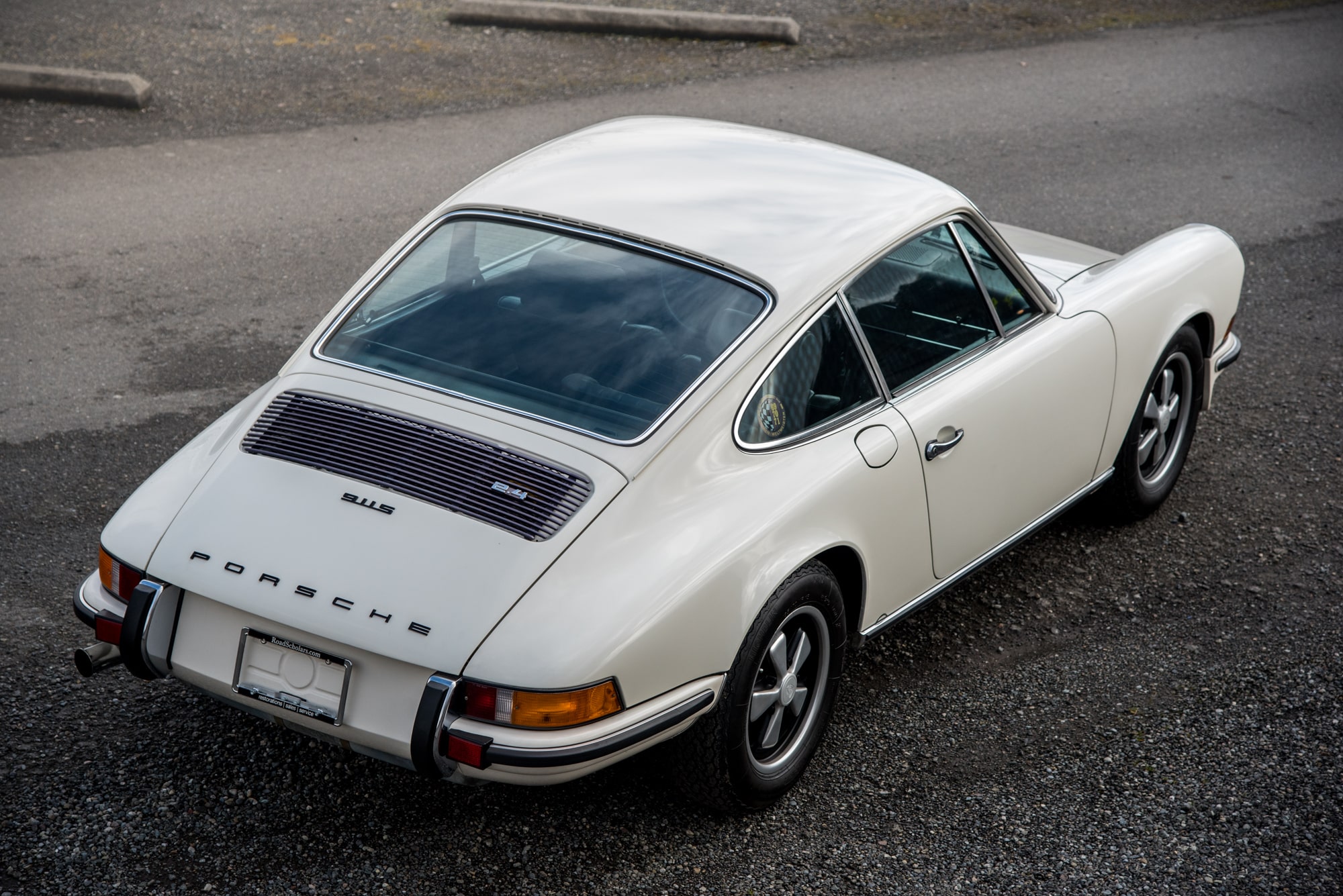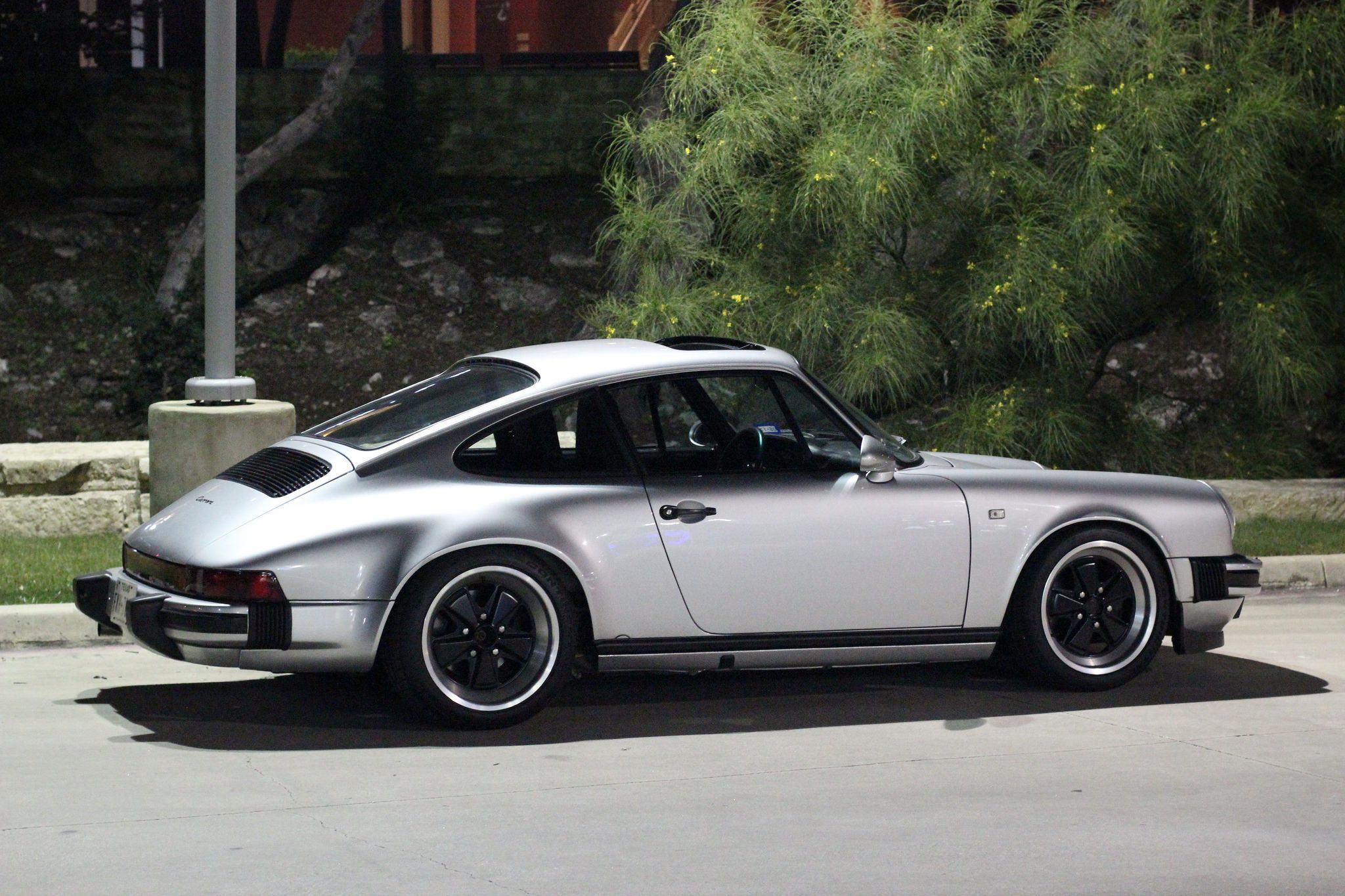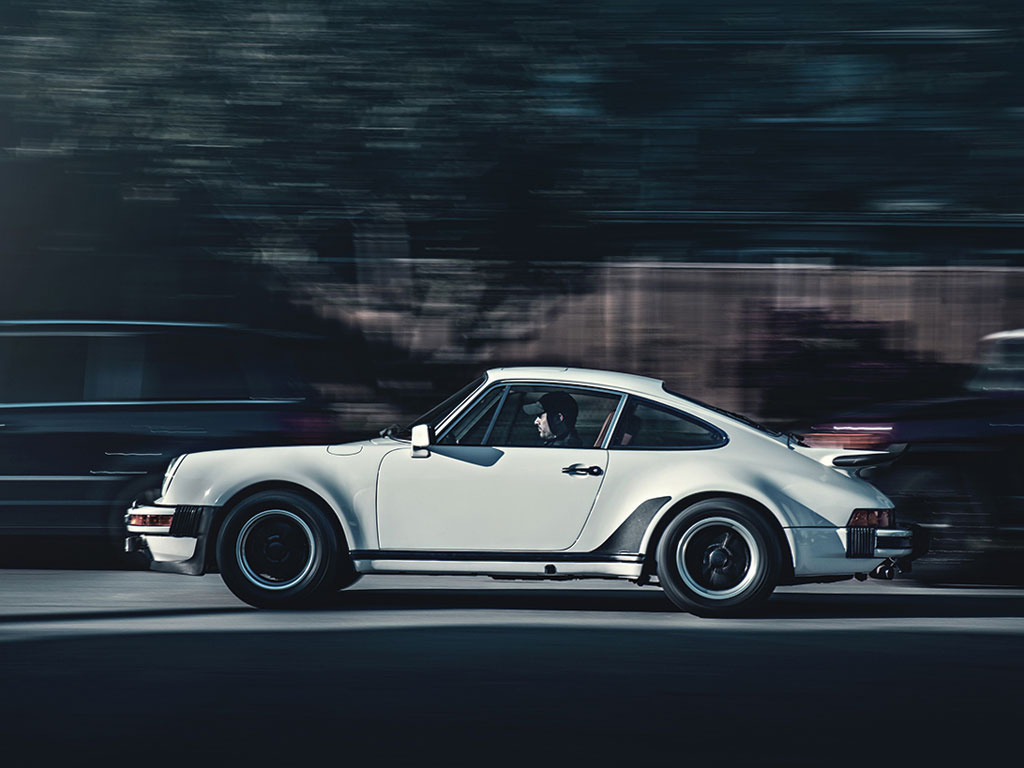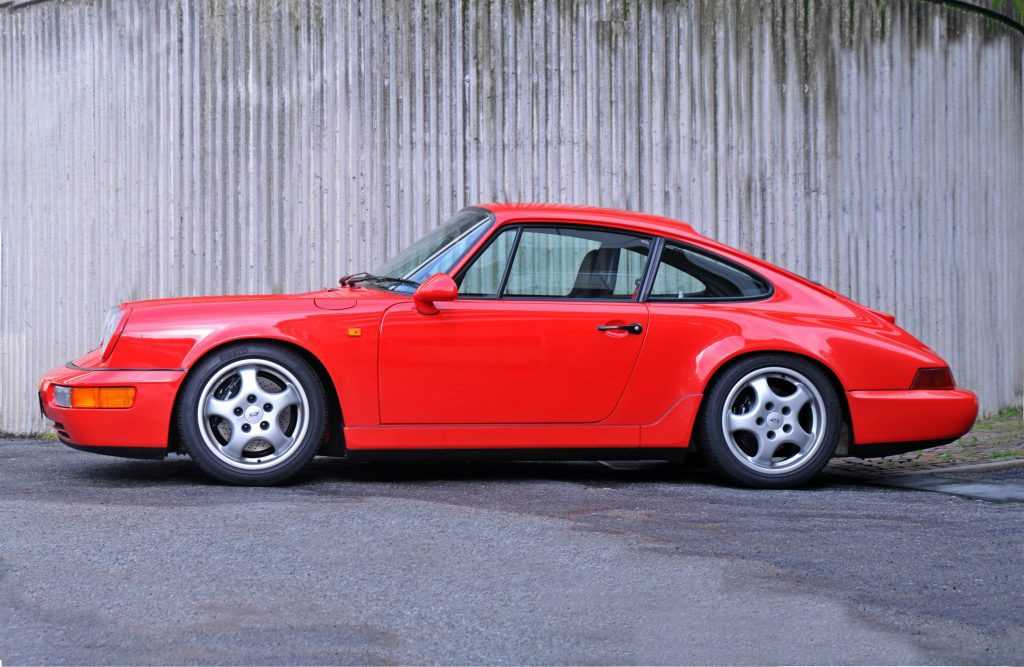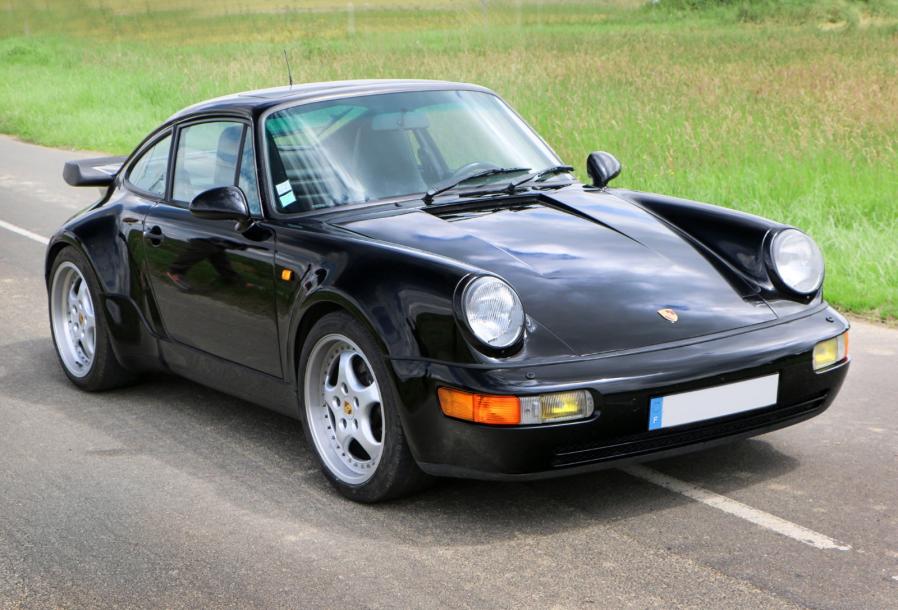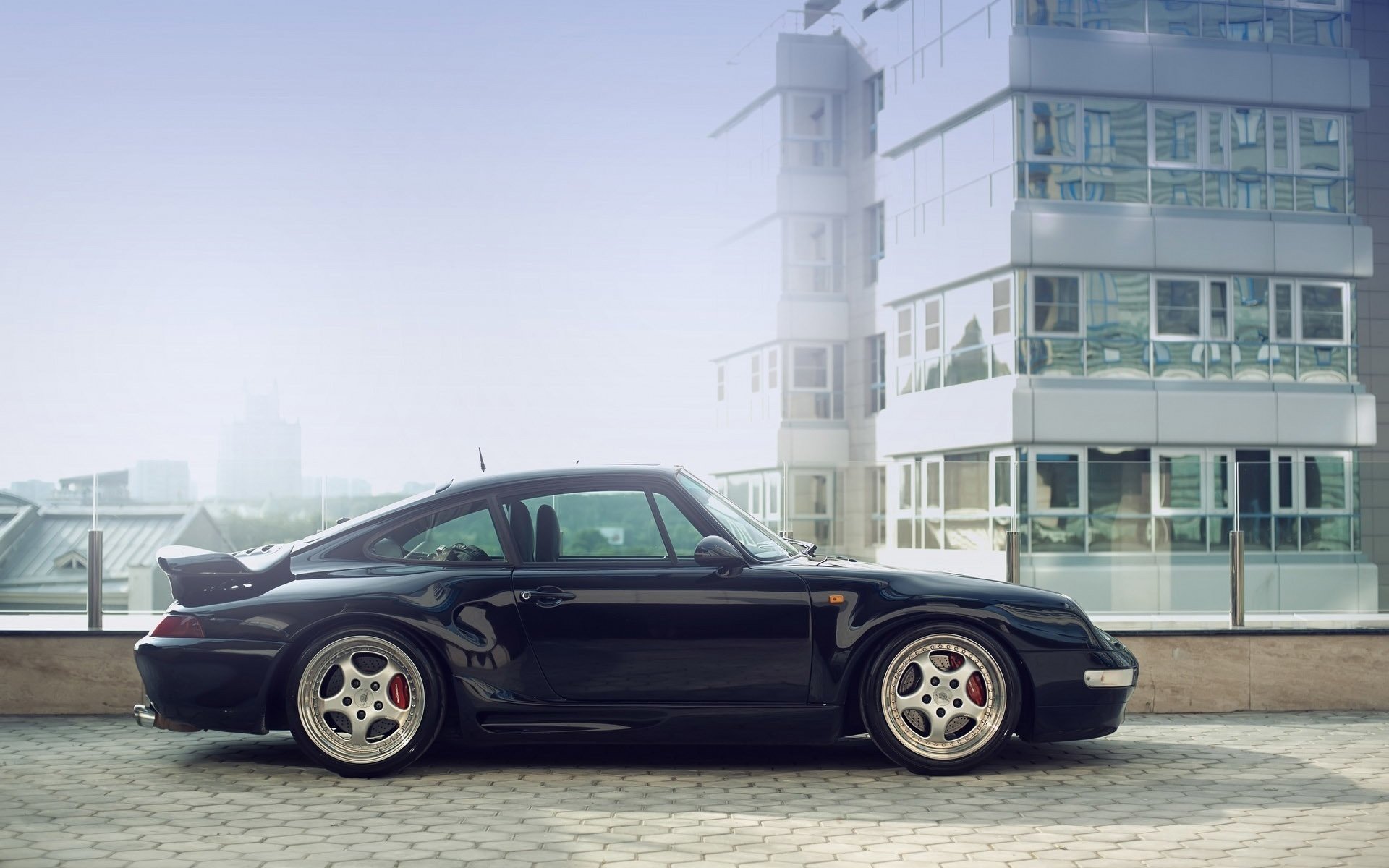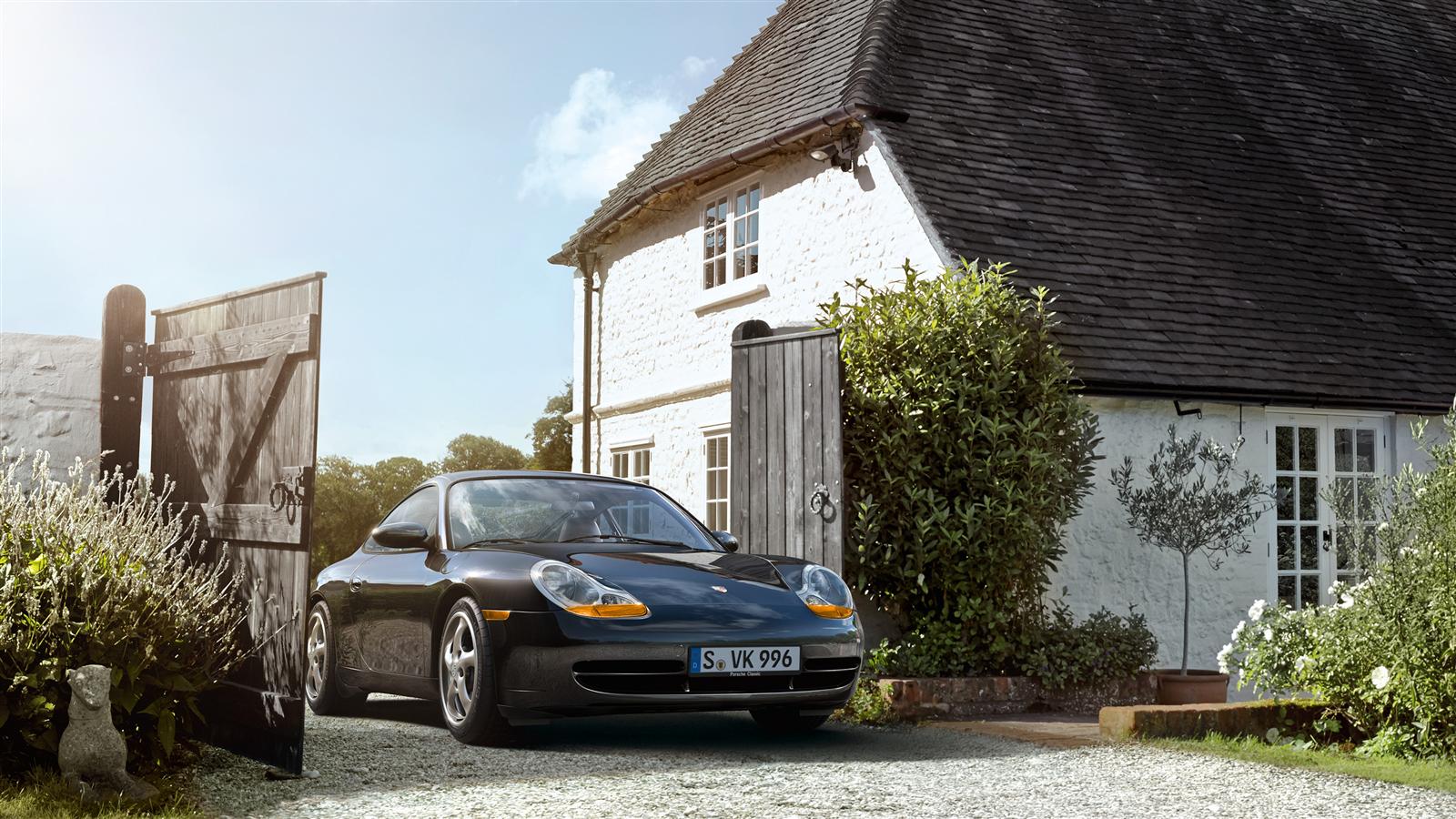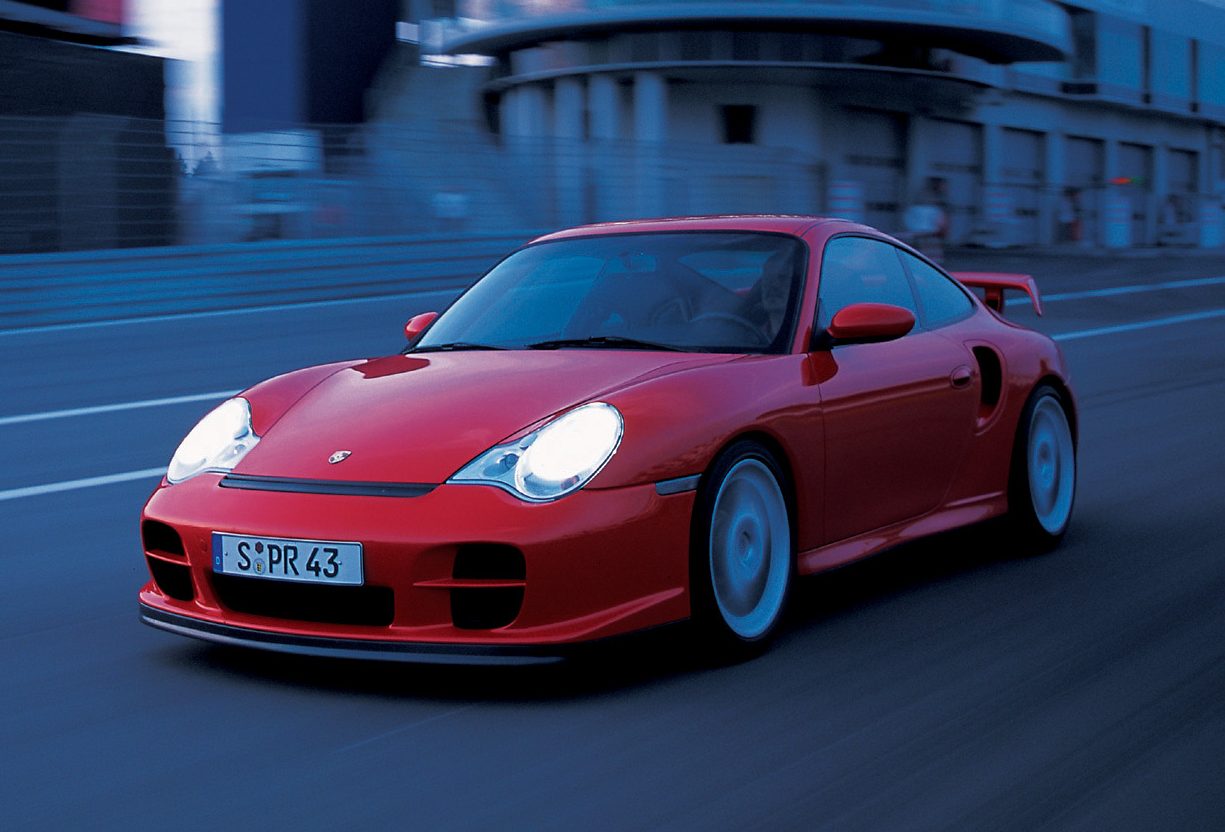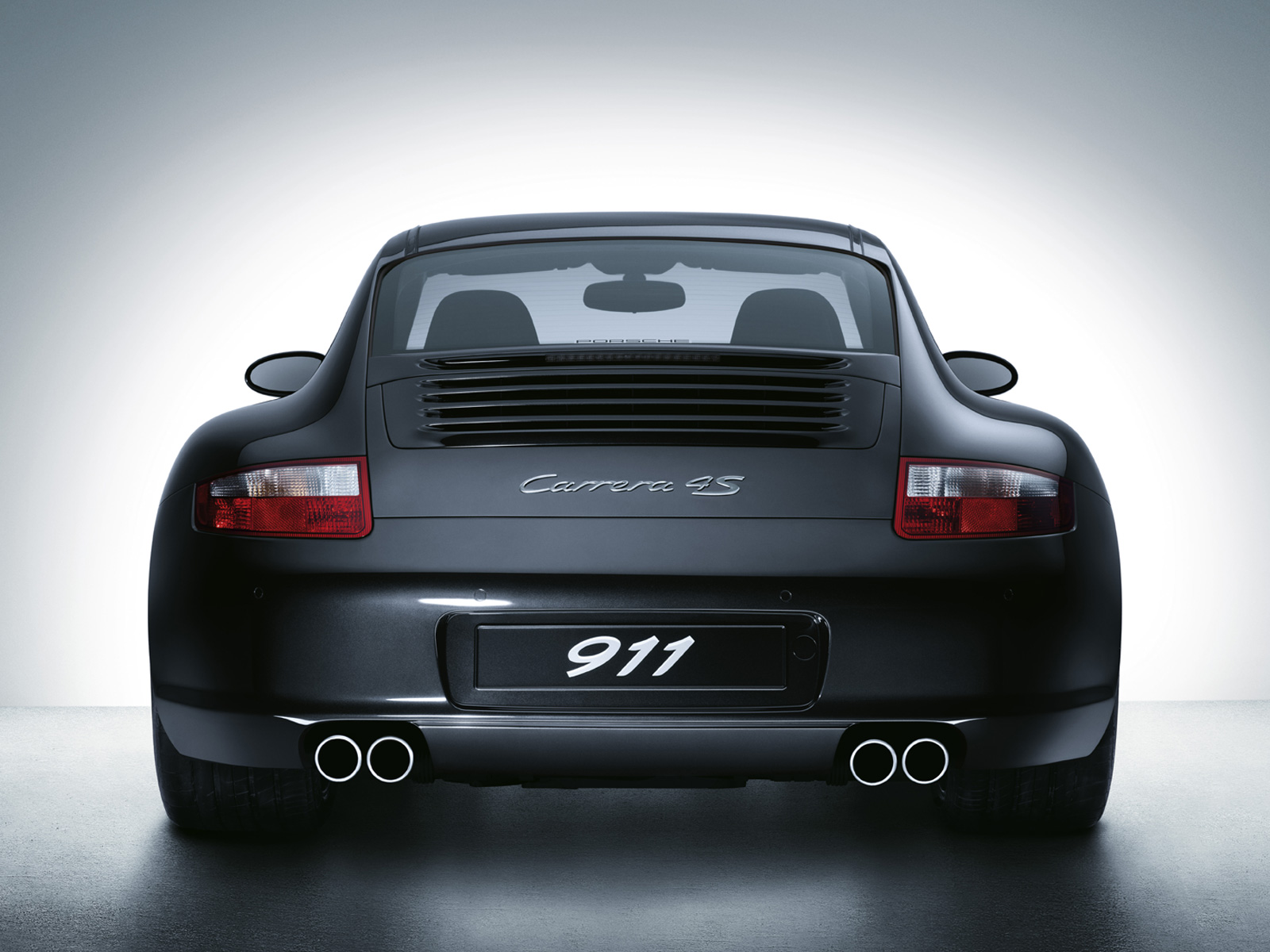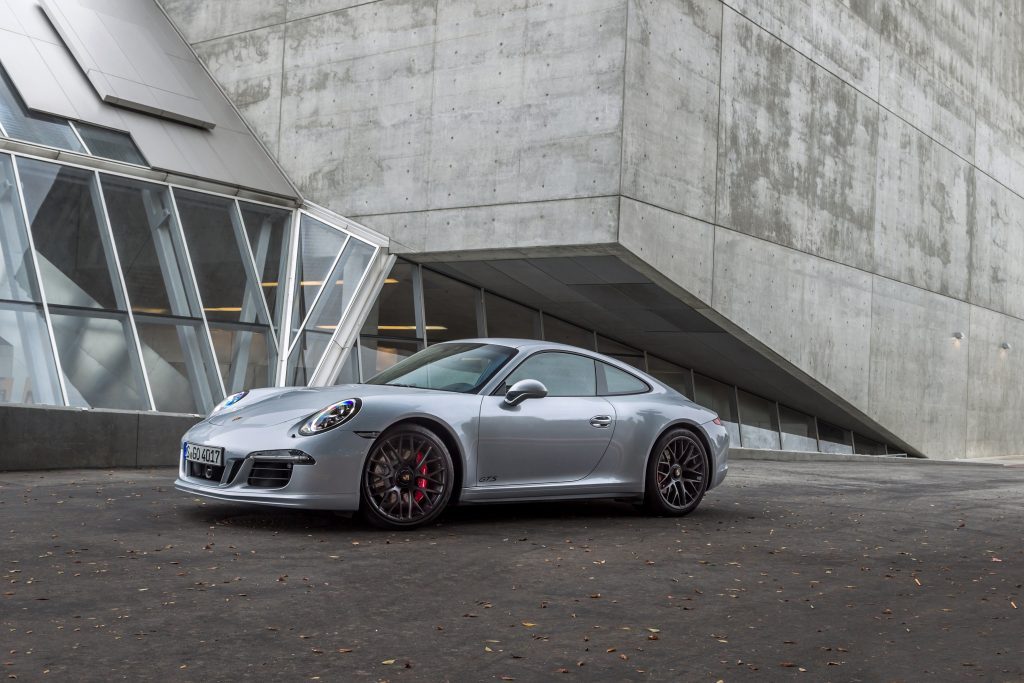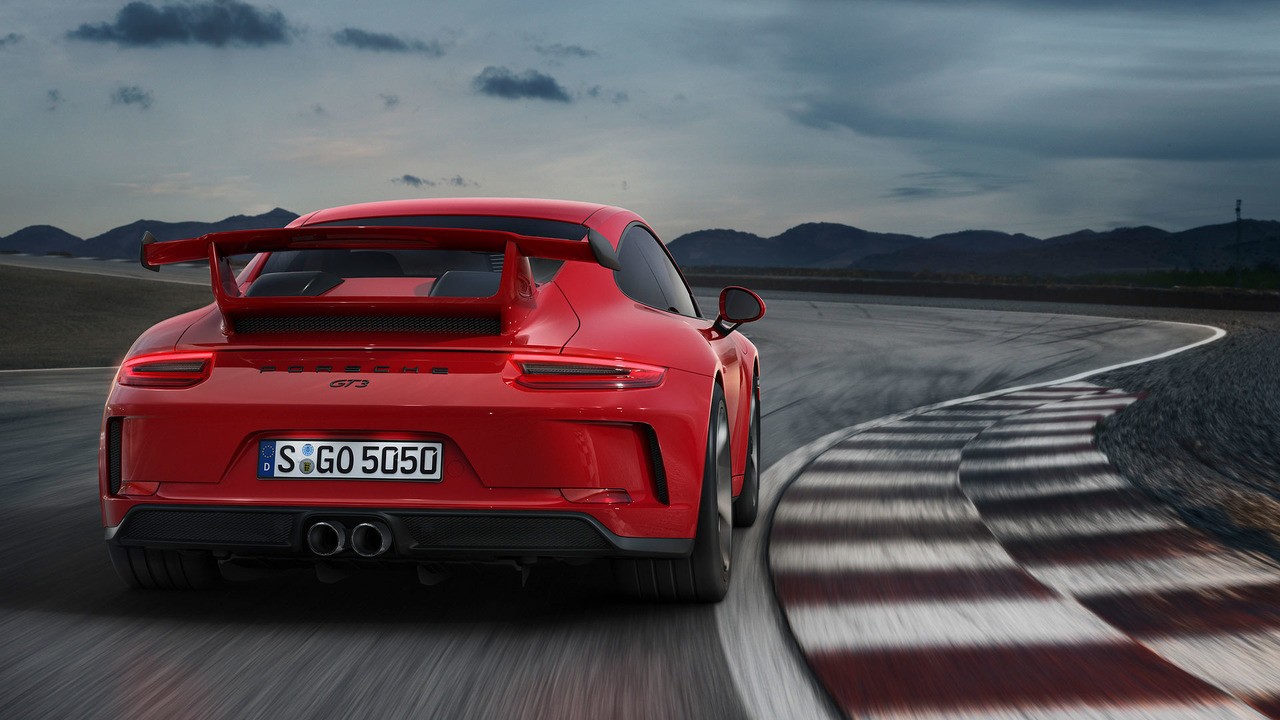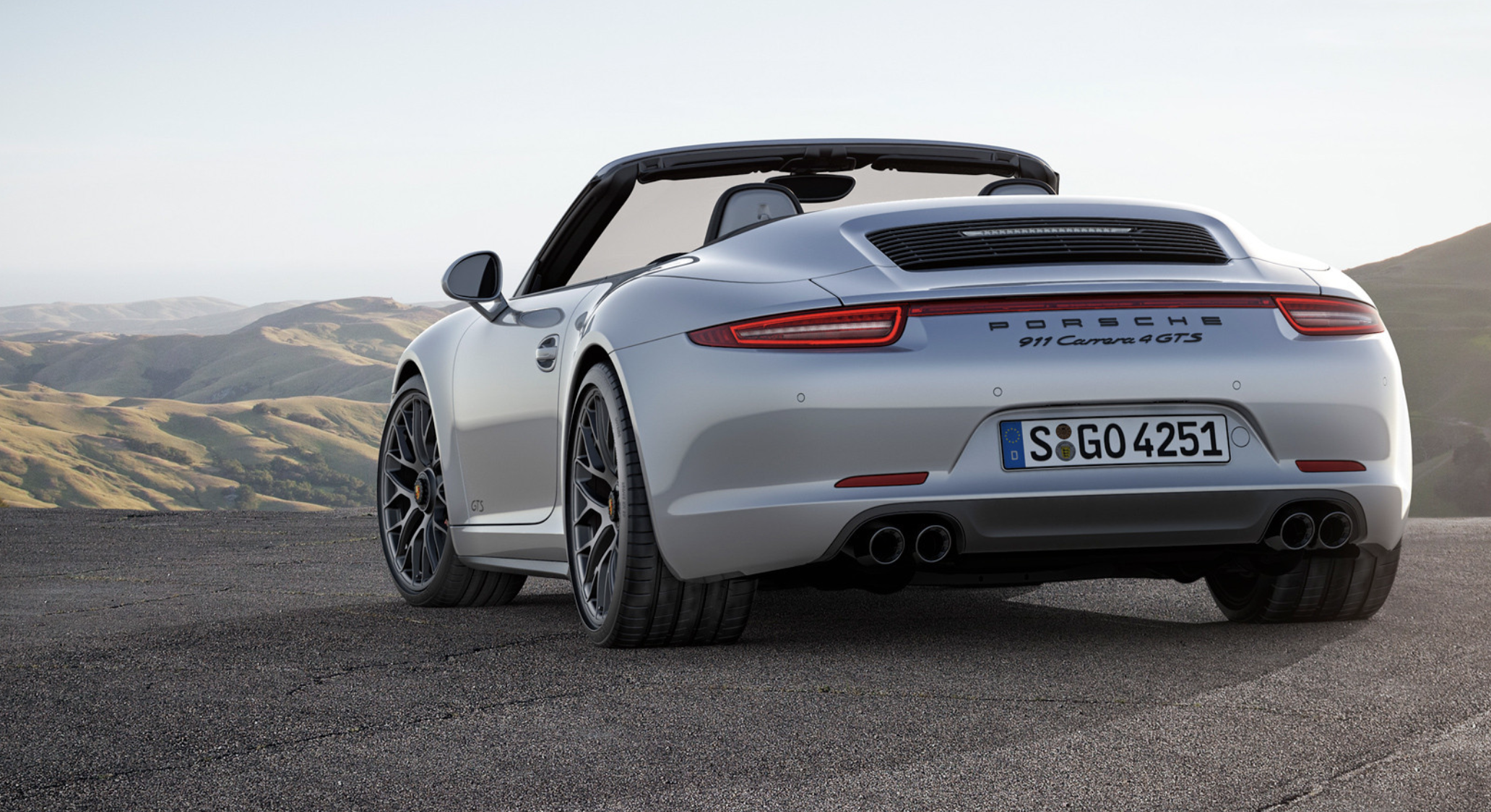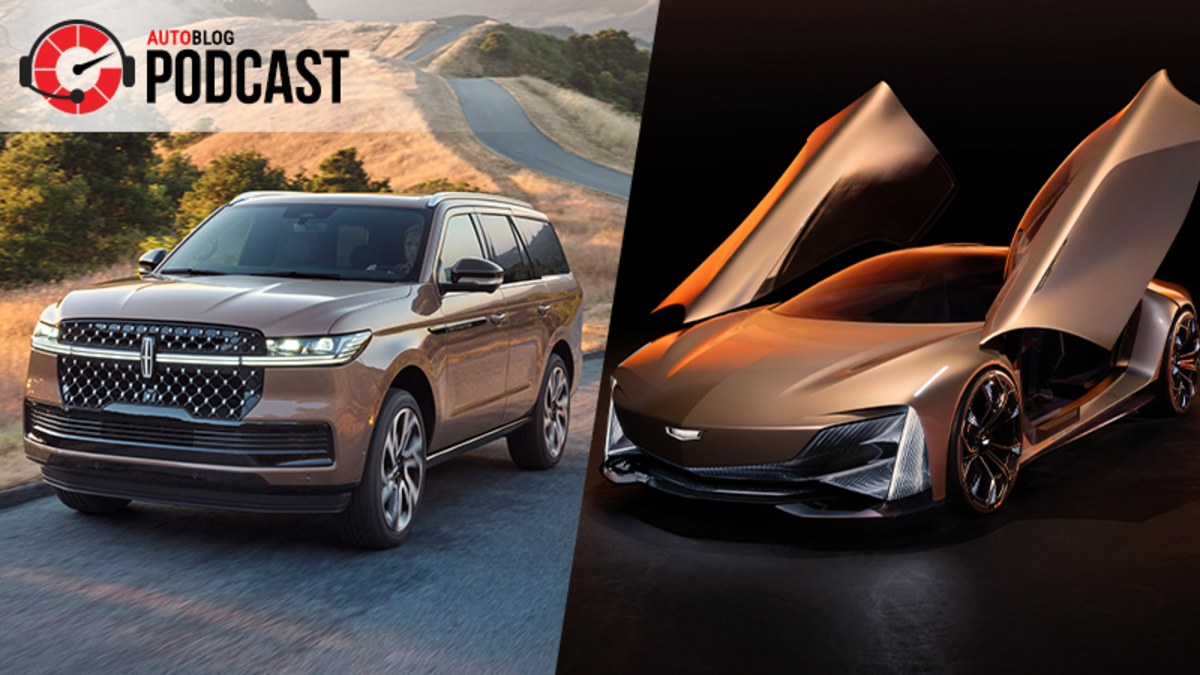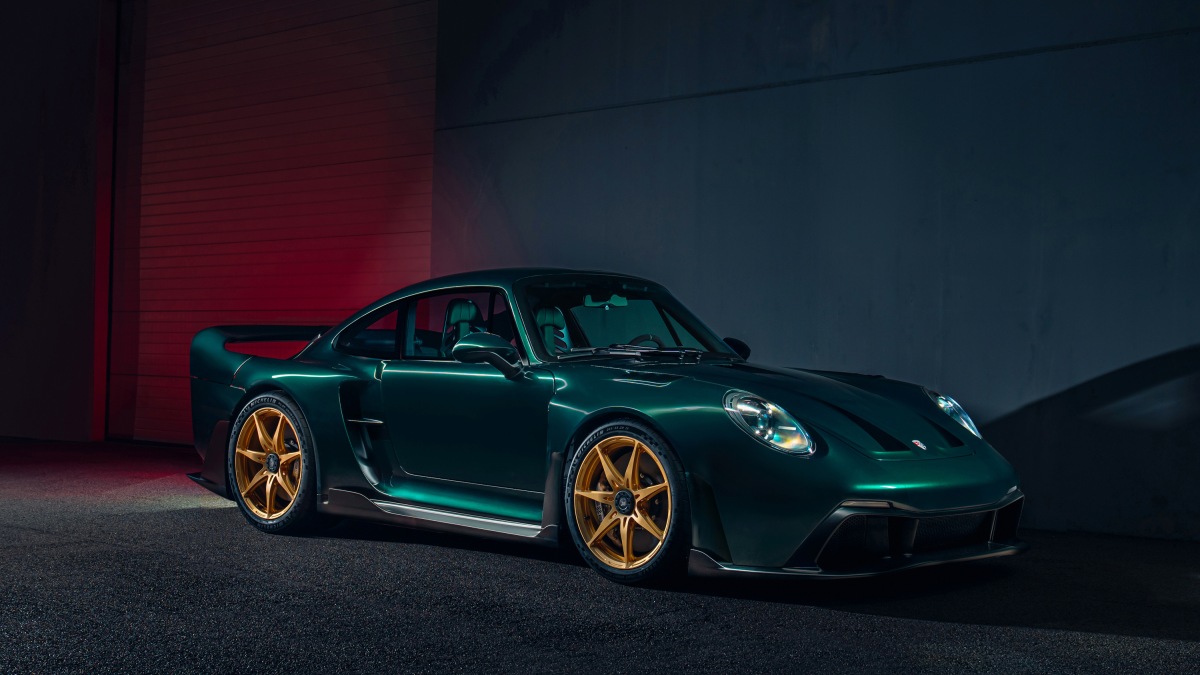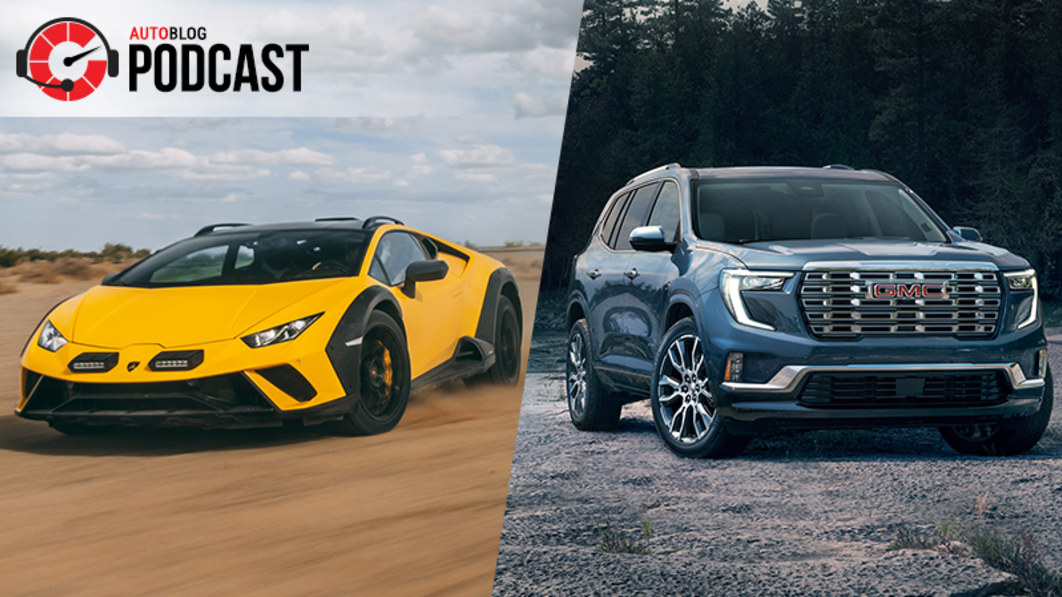Porsche Prepares To Evolve Beyond The 356
By the early 1960’s, with the commercial success of the 356 (in all of its variants) over the past decade, Porsche had garnered a reputation for building quality, high-performance vehicles that handled equally well on-and-off the race track. At the same time, Ferry recognized that the 356, for as much as it had evolved, was fifteen years old, and was due for a major redesign.
Instead, Porsche felt it was time to introduce the world to the successor of the 356. In September, 1963, at the Internationale Automobil-Ausstellung (the Frankfurt Motor Show) in Frankfurt, Germany, Ferry Porsche presented the successor to the 356 as the Porsche 901.
The early development of the 901 was centralized around a proven concept – develop another air-cooled, rear-engine sports car, but this time equip it with a more-powerful six-cylinder “boxer” engine. Much as his father had done for him a generation earlier, Ferry entrusted the body design of the Porsche 901 to his eldest son, Ferdinand Alexander Porsche (F.A.).
The decision to utilize Ferdinand Alexander created an upheaval within the Porsche organization. It had been assumed that Erwin Komenda, who had developed the body design for the Porsche 356 and led the body design department up to that point, would be responsible for the 901’s design. F.A. Porsche complained that Komenda made unauthorized changes to his design and caused internal strife within the group. As the design took shape, Ferry Porsche took his son’s drawings to neighboring chassis manufacturer Reuter to fabricate the first prototypes of the Porsche 901 design.
The car’s success at the Frankfurt Auto Show proved unequivocally that production of the 901 would begin as soon as the Porsche facilities could re-tool to begin production. There were still a good number of 356 C orders to be filled, and while production of the 356 C would continue for at least another year while additional engineering was completed on the 901, public appeal for the new car seemed very promising.
In September 14, 1964, production on the new Porsche 901 began and over the following week, a total of 82 cars were manufactured. One of the Porsche 901 prototypes was transported to the Paris Motor Show in October, 1964, and was once more well received by almost everyone – except for the executives of the French car manufacturer Peugeot.
Peugeot objected to the “901” designation because they too had patented a three-digit numeric designation for one of their cars that contained a zero as the middle digit. They asserted that they had ownership over the naming convention and had already sold many models in multiple markets bearing the same designation. Porsche’s solution? Change the middle “0” to “1” and call the car the Porsche 911.
Officially, the 901’s that had already been constructed were used for testing and for additional exhibitions, and Porsche never sold any of the original 82 units to private customers.
Porsche 912
In 1963, Porsche assigned the development of a new, horizontally-opposed, four-cylinder engine to Dan Schwartz, then Chief Departmental Manager for Development of Mechanical Systems. This engine was to be utilized as the powerplant for the 912 (originally Type 902), a variant of the Porsche 911, and was specifically intended to produce higher performance numbers than Porsche’s 356 SC engine. Moreover, the engine would be less costly and complex than their Carrera 2 engine.
Given time restrictions and developmental concerns, another option that was considered was to increase the displacement of the 1.6L engine (Engine Type 616) from the Porsche 356 to 1.8L, add Kugelfischer fuel injection, and modify the engines valve and cooling systems.
Again, given cost and scheduling concerns, both of these ideas were ultimately abandoned in favor of tailoring the exiting 1.6 liter Type 616 engine to the Porsche 912.
The Porsche 912 was not intended to replace the Porsche 356, but rather offer consumers who had appreciated the 356 as an option to buy a car at the same price point. The Porsche 911 (originally Type 901) was developed specifically as the successor to the 356 line, but because of the increases in technology and performance, including a larger, more powerful engine, Porsche recognized that the 911 would also cost considerably more than the outgoing 356 had, and so the 912 was introduced to bridge the gap between the outgoing 356 and the 911, the car that was to carry the Porsche brand forward.
As production of the 356 began to wind down in early 1965, Porsche officially began production of the 912 coupe on April 5th of the same year. Styling, performance, the quality of construction, the car’s reliability and the price made the Porsche 912 a very attractive alternative to the outgoing 356, and was well received by both old and new customers alike.
The Porsche 912 was manufactured by Porsche between 1965 and 1969 as their entry-level model. In that time, Porsche produced nearly 30,000 Porsche 912 coupes and roughly 2500 912 Targa top automobiles.
Although technically a variant of the 911, the 912 was a more nimble-handling compact performance 2+2 sports car, delivering 90 SAE horsepower at 5,800 RPM. Because of its highly-efficient flat-4 cylinder engine, low curb weight and low coefficient of drag, the Porsche 912 was capable of achieving up to 36 MPG, a number not commonly associated with any performance car of that era.
By 1969, Porsche executives made the decision that continuing production of the Porsche 912 would not be viable, due both to internal and external factors.
- For one, the production facility that was utilized for manufacturing the 912 was to be reallocated for a new model, the Porsche 914-6.
- Second, the 911 platform had returned to Porsche’s traditional model of offering three performance level options – a base model 911T, a fuel-injected 911E and a high-performance 911S.
- Third, by 1969, the United States had started implementing more stringent emission control regulations that would require re-engineering all of Porsche’s offerings – and given the optional, multi-tiered 911’s available combined with the pending introduction of the 914, it was determined that the 912 was not worth the effort.
Porsche 911
Perhaps the most famous sports car in the world today, the Porsche 911 was not initially regarded as the “gold standard” of sports cars. That’s not to say that the car was ill-received. In fact, when showcased at the Frankfurt Auto Show under the model Type 901, it was considered a triumph in design. The challenges facing the 911 was that it was the successor to the wildly popular Porsche 356 (pre-A, A-C), and, because it was considerably more expensive than its predecessor, it took some time for the car to establish itself for the performance machine it is recognized for today.
As previously stated, the Porsche 911 started its life as Porsche Type 901. It traces its roots directly back to sketches drawn by Ferry’s son Ferdinand Alexander Porsche. From its inception, the Porsche 911 was developed to be a more powerful, larger, more comfortable replacement for the Porsche 356.
The Porsche 911 was developed with the proof-of-concept Type 745 engine – a boxer six-cylinder, twin-cam, overhead-valve engine. However, early Dyno results weren’t as promising as Porsche had hoped. The engine was only capable of 120 horsepower. To bolster performance, the engine was reworked to a 2.2L engine to achieve the desired engine output of 130 horsepower, but compromises had to be made that included utilizing long, flexible pushrods that put competition-grade power out of reach with the OHV six-cylinder.
After driving an early 911 equipped with the 745-powered T7 engine (as it was officially classified), Ferry Porsche reportedly banned further development of new pushrod engines.
Instead, Ferry turned to Hans Mezger’s team to develop an overhead-cam variant of the flat-six engine. Mezger had worked under Fuhrmann straight out of university and had gained a great understanding of Fuhrmann’s approach to engine design. Over the next year, Mezger’s team would develop the boxer powerplant that would ultimately be used in the first iterations of the 911. By late 1963, the air-cooled Type 901/01 2.0L flat-six “boxer” engine was ready for production.
Production of the Porsche 911 began in September 1964.
The 1964 911 featured a four-seat configuration, although the rear seats were small – and considered too small to be used by anyone but a small child. As such, the car was designated as a “2+2” rather than a true four-seater.
The Porsche 911 came equipped with either a four- or five-speed manual “Type 901” transmission. The outward styling of the car maintained the conceptual elements originally drafted by Ferdinand Porsche, with many elements ultimately added by Erwin Komenda (who initially objected to Ferdinand’s involvement with the design).
By the 1960’s, the popularity of the Porsche 356 had won over the hearts and imaginations of many Americans. While in its humble beginnings Porsche may have initially focused on developing its automobiles for a European market, a large focus was placed on marketing the 911 to the United States. Left-hand drive Porsche 911’s began production almost immediately and the first 911’s were marketed to the United States in February, 1965.
In 1966, Porsche introduced the more powerful 911S, which featured the Type 901/02 engine capable of producing 160 horsepower (120 kW/160 PS). Forged aluminum alloy wheels from Fuchs, with a five-spoke design, were offered for the first time.
Porsche 911 A
In August, 1967, Porsche began production of the 911 A series which included some notable improvements over the previous models. To start, the 911 A featured dual brake circuits and widened (5.5J-15) wheels paired with Pirelli Cinturato 165HR15 CA67 tires.
More significant was the introduction of the Targa top version of the car. The Targa top variant featured a stainless steel-clad roll bar that was intentionally introduced because of the common belief by automobile manufacturers that rollover safety requirements enforced by the U.S. National Highway Traffic Safety Administration (NHTSA) would make it difficult for fully open convertibles to meet regulations for sale in the United States.
The designation “Targa” came from the Targa Florio sports car road race in Sicily, Italy. Porsche had participated in this event for many years, and scored many victories in a number of race-equipped variants of their production vehicles until the event was discontinued in 1973. The last win for Porsche was accomplished in a 911 Carrera RS against prototypes entered by Ferrari and Alfa Romeo. The road-ready 911 Targa was equipped with a removable roof panel and a removable plastic rear window.
Porsche 911 Series B – F
Porsche Series B
The Porsche 911 B series began production in August, 1968, replacing the A-series 911L model with the 911E, one of the first 911’s to be introduced with fuel injection. It remained in production until July, 1969.
Porsche Series C
The Porsche 911 C series was introduced just a year later in August 1969 and featured an enlarged 2.2-litre engine. The wheelbase for both all 911 and 912 models was increased from 87.0 inches to 89.3 inches (2,211mm to 2,268mm). The decision to increase the wheelbase was made because of the 911’s instability when running wide open at full throttle. While the overall length of the car did not change, the rear wheels were re-positioned further back. Fuel injection was introduced to the 911S and a new mid-level Porsche 911 was introduced.
In addition to the above, a semi-automatic Sportomatic 911 model was introduced. This variant featured a torque converter, an automatic clutch mated to Porsche’s time-tested four-speed transmission. A lot of people questioned the introduction of the Sportomatic to the 911 stable. Afterall, the 911 was an enthusiast’s car, and most driving purists chastised the inclusion of an automatic transmission in any sports car, but most especially a Porsche!
Porsche’s rationale was simple. Traffic in metropolitan areas grew more and more congested year after year. The people moving into those metropolitan areas where there to stay. Those people drive cars. Cars congest/clog the interstates. As anyone who has ever driven a manual transmission will confess, stop-and-go driving is a hassle and even die-hard sports car buffs were known to grow weary of driving a manual transmission-equipped car in congested traffic.
Apparently, the majority agreed with Porsche’s rationale. Despite criticism from both automotive enthusiasts, critics and journalists alike, Porsche’s Sportomatic 911 sold well for over a decade until the decision to continue the platform was made in 1980, when the gearbox for the transmission was changed from a four-speed to a three-speed.
Porsche Series D
The 911 D series was introduced in August, 1970 and produced until July 1971 with no notable changes over earlier variants save for some minor refinements to the powertrain.
Porsche Series E
However, the Porsche 911 E series, which was produced from August 1971 to July 1972 for model years 1972 and 1973 brought some notable improvements to the 911 lineup. While the E series featured all the same models, they all came equipped with a new, larger 2.3 liter (2,341cc) engine. The engine is known as the “2.4 L” engine, despite its displacement being closer to 2.3 liters.
The 911E (Type 911/52 engine) and 911S (Type 911/53) featured Bosch mechanical fuel injection (MFI) in all markets. For the 1972 model year, the 911T (Type 911/57) was carbureted, except in the U.S. and some Asian markets where the 911T also came equipped with fuel injection (MFI.) Those variants became known as the 911T/E (Type 911/51 engine) and featured an increased horsepower rating of 140 HP, compared to their European counterparts, which were still rated at 130 HP.
Because of the power and torque increases, the 2.4-liter cars also received a new, stronger transmission. This transmission, identified as Type number 915, was derived from the transmission originally introduced in the Porsche 908 race car.
The Type 915 transmission did away with the 901 transmission’s “dog-leg” style first gear arrangement, opting instead for a more traditional “H” shift pattern, with first gear up to the left, second gear beneath first, third gear up and to the right, and fourth below third.
The Porsche 911 E series had an unusual oil filler behind the right-side car door, with the dry sump oil tank relocated from behind the right rear wheel to the front of it. This decision to relocate the tank was made to move the center of gravity slightly forward to improve handling. An extra oil filler/inspection flag was located on the rear wing, and for this reason it became known as the “Oil Klapper” or “Vierte Tür” (fourth door.)
See Also: Our Porsche Hub, Porsche Model List & Stats and Recent Porsche Posts.
Porsche Series F
The Porsche 911 F series, which was produced from August, 1972 to July 1973 (for the 1973 and 1974 model years) received a few more, but equally noteworthy changes.
To start, the dry sump oil tank was moved back to its original location behind the passenger side rear wheel. This reversal was performed in response to numerous complaints received by Porsche from consumers stating that gas-station attendants often mistook the oil filler door as the fuel filler door, and would fill the oil tank with gasoline.
The G-Series 911
A decade into the 911’s life and Porsche decided an update was needed and gave the 911 a big makeover. Known as the ‘G-model’ 911 it sold almost 200,000 vehicles and was the longest running 911 series, being produced from 1973 to 1989. In addition to a Coupé and a Targa version, a Cabriolet was also available.
There were meaningful design changes to the 911, most notably a new raised bumper design with black plastic bellows (designed to meet U.S crash test standards). Between the tail lights of the G models is a red panel and a Porsche logo that is red or black, depending on the model year. The rear number plate is flanked by two large rubber buffers with integrated number plate lighting. Inside, the G Series 911 came with added safety features to appease U.S regulators and consumers, including three-point safety belts fitted as standard and seats with integrated headrests.
The base 911 model had a 2.7 liter flat-six engine with 150 hp that increase to 165 hp for model year 1976. The 911 S delivered an output of 175 hp.
The defining 911 of this era came in 1974 and was the original 911 Turbo. The 930 911 Turbo had a 260 hp engine (and the coolest rear spoiler ever). Its advanced 3 liter turbo engine had technology like charge pressure control on the exhaust side (previously available only in race cars) which prevented unwanted excess pressure during partial load or overrun. When charge pressure was needed again during an acceleration phase, the bypass valve closed and the turbine could work to its full capacity in the exhaust stream. With its unique combination of luxury and stonking performance the ‘Turbo’ became a synonym for the Porsche brand. The Turbo got a major update in 1977 when power jumped to 300 hp from a bigger 3.3 liter engine. It was easily the most powerful and high performance car in its class and further grew the 911 legend. Innovation wise the new Turbo had a charge-air cooler.
In 1983, the naturally aspirated 911 Carrera superseded the SC; with a 3.2 liter flat six that had 231 hp but more importantly it was also when the you could order the 911 with no roof. Yuppies united everywhere and a new love for Porsche emerged amongst the well healed. In terms of special models, the 911 Carrera Speedster was launched in 1989 and had a unique look that paid homage to the 356 speedster of the 50s.
The Next Generation Of The 911
In 1990, even as production continued in earnest on the Porsche 944, and pre-production design was well underway on the upcoming 968 model, the executives at Porsche were preparing to unveil the latest iteration of the all-wheel drive 911 Carrera 4 and the rear-wheel drive 911 Carrera 2.
While these cars were badged as 911’s, they contained virtually none of their predecessor’s architecture. In fact, this latest version of the 911 Carrera shared a mere 15% of the parts found in the earlier iteration of the car.
Officially identified as Type 964, the new Porsche 911 was a contemporary take on the classic two-door sports car. It featured a 3.6- liter boxer engine that produced an impressive 250 horsepower.
Externally, the new Porsche 911 (Type 964) looked virtually the same as its predecessor, save for the introduction of aerodynamic polyurethane bumpers and an automatically-extending rear spoiler which replaced the “whale tail” found on the 911 throughout the 1980’s.
Looking inward, the interior was an almost entirely reimagined Porsche 911. The new model featured a design that was intended to blend performance with comfort. The new 911 featured many creature comforts that had been lacking in earlier versions of the car including: ABS, a Tiptronic automatic transmission, power steering, and airbags.
While the entire lineup of new Porsche 911 models was well received by consumers, it was the introduction of an all-wheel drive Carrera 4 model that really captured the attention of the automotive community as a whole.
The all-wheel drive option, while relatively commonplace today, was revolutionary for its time because it enabled consumers the opportunity to purchase a 911 that was far more adaptable to varying road conditions. When any of the drive wheels slipped during operation, the power was automatically transferred elsewhere, ensuring that the driver could maintain a greater degree of control whenever the driving environment became less manageable.
The 911 Turbo
In addition to the base model Carrera Coupe, Cabriolet and, Targa versions, the 1990 Porsche 911 offerings also included a Type 964 Turbo option. When first introduced in March, 1990, the 911 Turbo initially featured a turbocharged 3.3- liter boxer engine that was carried over (with updates) from the previous 911 Turbo model, albeit with reduced turbo lag.
However, in 1992, the Porsche 911 Turbo was upgraded to a more powerful 3.6- liter power plant. The updated engine produced 320 horsepower and could catapult the 911 Turbo to a top speed of 169 miles per hour, with a 0-60 mph (0-100km/h) of just under 5.0 seconds. The 3.6- liter engine would serve as the standard engine for the 911 platform for many years to come.
Porsche 911 (Type 993) – The Last Air-Cooled Model
The Porsche 911 (Type 993) was developed by the Porsche AG company as the replacement to the Porsche 964 model (which had been introduced in 1990 as a successor to the earlier 911 platform.)
Considered by many Porsche enthusiasts as the “ultimate 911”, the type 993 represented a unique blend of power and simple elegance.
The car featured integrated bumpers which underscored the new, more streamlined look of the Porsche 911. The front end of the car is “lower slung” than earlier versions of the 911, due in large part to the poly-ellipsoid shape of the redesigned headlights. These headlights, which have become an integral part of the iconic and immediately-identifiable 911 brand, represent the integration of design elements that made the Type 993 such a refined automobile.
Even before its commercial introduction in 1995, the Porsche 911/Type 993 gained a reputation for exceptional dependability and reliability. The air-cooled engine was mated to a standard six-speed manual transmission – making the 993 the first-generation of 911 to feature a six-speed transmission (all earlier variants had either 4- or 5-speed gearboxes.) The Carrera, Carrera S, Cabriolet and Targa models were also available with an optional Tiptronic 4-speed automatic transmission (the same automatic first introduced in the Type 964 Porsche 911.
The Type 993’s optional all-wheel-drive system was revised, eliminating the three-differential setup that had been used in the Type 964 car and replacing it with a revised setup reminiscent of that found on the Porsche 959 supercar.
The 993 also received a redesigned suspension system. This new suspension system was specifically developed to produce improved handling characteristics during inclement weather while retaining the stability offered by the aforementioned all-wheel drive system. The revisions made to the suspension system resulted in an overall weight reduction to the car.
The newest 911 was praised by critics for being incredibly agile, due toin the overall curb weight reduction from the previous 911 model (Type 964). The Porsche 911/Type 993 was sold between January 1994 and early 1998 (with U.S. based models going on sale from 1995-1998.
A Turbo-version of the Type 993 Porsche 911 was also introduced in 1995. It featured a bi-turbo engine, giving the 911 the distinction of having the lowest-emission stock automotive powertrain in the entire world. The car also featured hollow-spoke aluminum wheels. These wheels had never been used before on any vehicle, and marked an important innovation when they were introduced on the 1995 Porsche Type 993.
The discontinuation of the Porsche 993 in 1998 officially marked the end of the air-cooled Porsches.
The Type 993 variant of the Porsche 911 has often been referred to as “the best and most desirable of the 911 series, not only because of its beauty, but also because of its great performance, even by modern standards.”
Much of the reverie behind this car is the air-cooled engine, though Porsche purists celebrate the 993 as “the last complete ‘modern classic.’” For many Porsche collectors, the 993 is also acknowledged and celebrated as the Holy Grail of any Porsche collection.
The New 911 (Type 996)
The Porsche 911 (Type 996) was a new design developed by Pinky Lai. While the car incorporated the classic lines and tear-drop shape of all the 911’s earlier iterations, Type 996 was nearly a complete reimagining of the 911 sports car, and carried very little over from its predecessors.
Type 996 featured all-new bodywork, a reimagined interior, and the first water-cooled engine ever used in a 911. The only carry-overs were from the earlier 911 (Type 993) from which the front suspension, rear multi-link suspension, and a six-speed gearbox were repurposed after some revisions to make them current.
The 911/996 was introduced in early 1997, following the successful roll-out of the Porsche Boxster. Like the Boxster, it was well received and praised for “retaining all the character of its classic heritage.”
When introduced in 1997, the first 996 models were available as either a rear-wheel-drive coupe or cabriolet (convertible). Later development of the model would re-introduce an all-wheel-drive variant of both versions of the car.
The new 911 featured a 3.4 liter, flat-6, and a naturally-aspirated engine that produced 296 horsepower (224 kW), thanks to the introduction of its four-valve cylinder heads. Moreover, the new boxer engine broke new ground in terms of reduced emissions, engine noise, and fuel consumption.
Although Porsche had identified an opportunity to streamline production of both the Boxster and the 911 by the sharing of components between the two models, the initial response from 911 owners was the criticism that the “lower priced car looked just like theirs did.” This complaint would not register with Porsche for many years – although it ultimately resulted in some minimal design changes – including reimagined headlights – in 2002.
The 996 Turbo And GT2/GT3 Platforms
996 Turbo
The Porsche 911 (Type 996) Turbo debuted at the Frankfurt Auto Show in September 1999.
Unlike its naturally aspirated counterpart, the 996 Turbo featured a water-cooled, twin-turbocharged/intercooled 3.6- liter engine that was derived from the 1998 Le Mans-winning GT-1 Porsche 911. This new engine produced 415 horsepower at 6,000 rpm and 415 lb-ft of torque.
The 996 Turbo featured all-wheel drive and came equipped with either a 6-speed manual or a5-speed Tiptronic automatic transmission.
The 996 Turbo also featured revised body styling and a wider stance than its other 911 Carrera counterparts. It also came equipped with new bi-xenon headlamps.
Models exported to the United States featured a rear spoiler that would automatically ride at 76 mph (122 km/h) and lower at 36 mph (58 km/h). While the spoiler purportedly helped to reduce lift at higher speeds, the size and width of the spoiler were deemed too small to provide any beneficial downforce.
The 911 GT2 And GT3
GT3
Given the 911’s earlier successes in the GT-1 class at Le Mans, the Porsche 996 platform was used as the foundation for two lightweight, track-ready variants of the car. The first of these variants was the GT3.
The GT3 was based on the standard 996 Carrera, but it was stripped of any extraneous equipment to reduce the car’s overall weight. The car featured a stiffer, though adjustable, suspension platform as well as upgraded brakes. The bodyshell that was developed for the all-wheel-drive version of the 996 was selected because it provided greater front-end stiffening.
Two versions of the GT3 were manufactured. The first, which is commonly referred to as the Mk.I GT3, was released in 1999 to all markets except North America. This version of the car featured a naturally aspirated 3.6L flat-six engine that produced 360 horsepower (270kW). This was the same engine that was shared with the 996 Turbo and was based on the engine used in the 911 GT1.
The Mk. II GT3 variant was based on the second generation of the Porsche 996. It featured updated aerodynamics and a more powerful version of the aforementioned 3.6L engine.This new variant of the engine produced 380 horsepower (280 kW). With this revised powerplant, the Mk.II GT3 could accelerate from 0-60 mph in just 4.0 seconds. Equally impressive was the 1.03g it produced on the skidpad.
This second variant of the GT3 platform had the unique distinction of being the first GT3 class Porsche marketed in North America
GT2
The second iteration of the racing-class Type 996 Porsche 911 was dubbed the GT2.
Like the GT3, the GT2 was a rear-wheel-drive variant of the current 911 platform. Also like the GT3, the reasoning behind a rear-wheel-drive (versus all-wheel-drive) configuration was two-fold. First and foremost, GT2 Class racing rules mandated the use of a rear-wheel drive platform. Second, and equally important, was the fact that the rear-wheel-drive solution weighed less than the all-wheel-drive option.
The GT2 996 received additional aerodynamic modeling to many of its body parts. It also received a re-tuned version of the 996 Turbo’s 3.6- liter twin-turbocharged engine which included larger turbochargers and intercoolers, a revised intake and exhaust system, and re-programmed engine control software. When tested, the GT2 996 produced 489 horsepower and 484 lb-ft of torque, which was enough to propel the car from 0-60 mph in just 3.9 secondswith a top speed of 198 mph (319 km/h).
Both the GT2 and GT3 variants of the 996 came equipped solely with a six-speed manual transmission.
The Porsche 911 GT3 became one of the highlights of the 996 era when it was introduced in 1999. It was celebrated by Porsche enthusiasts for “keeping the tradition of the Carrera RS alive. Conversely, the Porsche 911 GT2, the first car to be equipped with ceramic brakes as standard equipment, was marketed specifically as an extreme sports vehicle capable of track-level performance. It was released to the marketplace in fall, 2000.
Evolution Of The 996
In 2002, the standard models of the Type 996 underwent minor re-styling (911 996.2 model name), which included switching out the integrated headlamps that had long been shared between the 911 and Boxster models) with the Turbo-style headlamps. All variants of the car also received a new front fascia.
Mechanically, all variants of the 996 were standardized on the 3.6- liter engine, which yielded gains of 15 horsepower to the naturally aspirated models.
Also in 2002, Porsche introduced both the 996 based Targa, which featured a sliding glass roof reminiscent of the one found on the 911’s Type 993 predecessor. That same year, Porsche also introduced the Carrera 4S model. The C4s, as it has become known, shared the same wide-body look of the 996 Turbo as well as the same braking and suspension systems previously introduced ion that model.
Porsche Type 997
In July, 2004, Porsche again unveiled another iteration of the 911 Carrera and 911 Carrera S models. Known as the Porsche Type 997, the car featured the same classic silhouette as all earlier variants of the Porsche 911, and included design cues – most especially a return to the clear, oval headlights with separate blinkers – that were found on older 911 models.
While the Porsche 911 Type 997 featured a refined, race-inspired appearance, the car was hailed for being a true high-performance vehicle. The base Carrera featured a 3.6- liter boxer engine that produced an impressive 325 horsepower while the new 3.8- liter, six-cylinder engine found in the Carrera S produced an incredible 355 horsepower.
At the Geneva Auto Show in 2006, Porsche introduced the 911 Turbo, the first gasoline-powered production automobile to include a turbocharger with variable turbine geometry,a technology that allowed the aspect ratio of the turbo to be altered as conditions changed.
They also introduced the next-generation Porsche 911 GT3. The new 911 GT3 was equipped with a 3.6 liter, naturally aspirated engine that produced 415 horsepower. The Porsche 911 Type 997 received another update in late-fall 2008 (called the 997.2). Porsche engineers further improved the car’s fuel efficiency by introducing direct fuel injection and a dual-clutch transmission.
Never in Porsche’s long history of building incredible driving machines had the company allowed as many owner-selectable preferences as they had with the Type 997, and with the Carrera, Targa, Cabriolet, rear or all-wheel drive, Turbo, GTS, special edition models and road versions of the GT race cars, the Porsche 911 stable was now comprised of 24 different model versions.
Porsche 911 Type 991
As with the earlier generations of the Porsche 911 that had come before it, the Porsche Type 991 was a revolutionary step forward for the 911 brand. The car continued to feature the same characteristic teardrop shape for which the 911 is immediately recognizable to just about any automotive enthusiast. However, two unique design principles were followed that helped refine the character of the car.
First, the arch of the roofline was reduced and re-design to taper gradually to the rear of the car. Second, the front wings (the assembly that includes the headlight and surrounding structure) were now placed higher than the lid.
Compared to the outgoing 997, the 991 was a slightly larger vehicle, with a wheelbase that was increased by approximately 3.9 inches (100 millimeters), and the overall height was increased by 2.8 inches (70 millimeters).
A new transaxle was developed so that the rear wheels could be moved 3 inches (76 millimeters) backward in relation to the position of the engine, which dramatically improved the car’s weight distribution and cornering performance.
Carrera And Carrera S (2011-2016)
Base models were introduced in September 2011 at the Frankfurt Motor Show. The Carrera came equipped with a 3.4- litre boxer engine with direct fuel injection, 345 bhp (257 kW) at 7,400 rpm and 288 lb⋅ft at 5,600 rpm. The Carrera S received a 3.8- litre engine with 395 horsepower (294 kW) at 7,400 rpm and 325 lb⋅ft at 5,600 rpm. The convertible model of the 991 was announced in both Carrera and Carrera S versions, at the LA Motor Show in November 2011.
In September 2012 at the Paris Motor Show, all-wheel-drive variants – the Carrera 4 and 4S, were added to the line-up.
911 Carrera GTS (2014–2015)
Introduced in November, 2014, at the LA Motor Show, the 991 Carrera GTS was developed as the mid-level model between the Carrera S and GT3 edition 911s.
Base options included a 424 horsepower (316 kW) PowerKit, a Sport Chrono Package, a Sport Exhaust System, Dynamic Engine Mounts, 10mm lowered suspension, Porsche Torque Vectoring (PTM) system, LED daytime running lights with Porsche Dynamic Lighting System (PDLS), Sport Design Front Spoiler, Sport Design Rear Mirrors, GTS badging, and 20″ Centerlock wheels. When optioned with PDK, 0–60 mph is achieved consistently at 3.8 seconds with the help of Launch Control.
911 Targa 4 And 4S (2014–2015)
At the Detroit Motor Show in January 2014, Porsche introduced the Targa 4 and Targa 4S models. These new derivatives came equipped with an all-new roof technology that still incorporated the original Ttarga design, now with an all-electric cabriolet roof along with the B-pillar and the glass ‘dome’ at the rear.
On January 12, 2015, Porsche announced the 911 Targa GTS at the North American International Auto Show in Detroit. Similar in appearance to the existing Targa 4 and 4S models, the GTS added the 424 horsepower (316 kW) engine plus several otherwise optional features.
Type 991.2 & The Era of Turbocharging
2015 marked a new milestone in Porsche’s history with development of a turbocharged flat engine that gave the world’s best-selling sports car a significant boost in power as well as considerably lower fuel consumption. Porsche gave the Carrera and Carrera S models these flat six turbo engines which were previously sold as normally aspirated only. There was initial pushback from enthusiasts that seems to have now dissipated.
On the outside there weren’t many changes for the 991.2 range. Slightly different bumpers with larger air intakes, new rims and different rear hood vents, with the slits now being placed longitudinally and different rear lights. The interior stays pretty much the same, but it does get a new touchscreen infotainment system also compatible with Apple CarPlay. Mechanically, apart from the extra power and better fuel economy provided by the two little turbos, the 911 Carrera gets wider wheels, new shock absorbers and standard PASM active suspension.
The new 3.0-litre twin turbocharged six-cylinder flat engine developed 370 hp in the 911 Carrera and 420 hp in the 911 Carrera S, up 20 hp over the prior versus the 991.1. Torque was up a lot more and that is where the new turbo engine was a real hit, transforming the 911 from a “rev to the sky to get performance” machine to a “just put your foot down in any gear” affair. You can decide if that is better or worse depending on what you enjoy I guess. Other improvements in the 991.2 range included not just more power, but updated Porsche Active Suspension Management (PASM) chassis and optional rear axle steering improved the best time of the 911 on the Nürburgring-Nordschleife to 7.30 minutes. Ten seconds faster than its predecessor and with an even greater lead over the competition.
All the same models from the 991.1 series were still available (24+ models) with the addition of an entirely new variant called the Carrera T. This is a first-order driver’s car, a basic 911 equipped with purposefully selected, road-annihilating hardware. The point of the T (for Touring) is to be a spartan model equipped with only the necessities that a dedicated driver might want. It has the same 370hp as the base 911 mated to the (good) seven-speed manual transaxle. Add shorter gearing and a limited-slip differential and this is a tasty package. The Carrera T also gets two-mode PASM sport suspension and a custom Sport Chrono package. There are other weight saving measures that add up to 44 pounds in less weight than a standard Carrera. Shorter gears, LSD, thinner glass, no rear seats plus a preselected mix of the base 911’s best hardware, now that’s our kind of 911.
In terms of special models, they all got some tasty upgrades, but the move to turbocharging for the broader range makes them seem less special on paper (clearly paper lies). For example, with the PDK and the launch control system activated, the 2018 Porsche 911 GT3 gets to 62mph in 3.4 seconds. With the manual gearbox, a similar sprint takes 3.9 seconds. That makes the GT3 barely faster than the 911 GTS which is a better daily driver and a 580-hp 911 Turbo S is an entire second faster to 60 so why would you choose the GT3 over these models. It’s easy. It is how it drives and how it makes you feel. The good news is that the GT3 and GT3 RS both are still the best handling I’ve ever experienced. Fast, loud, firm, surgically precise and no body roll, these cars deliver full sensory overload at slow speeds around town and an almost religious experience at speed on track. There is nothing better. Well, maybe there is because in the 991.2 Porsche decided to bring back the manual gearbox in the GT3. Called the Touring and it is the exec’s GT3. There’s the deletion of the regular GT3’s fixed wing replaced with a classic pop-up rear deck, albeit embellished with a ‘GT3 Touring’ badge and a unique lip spoiler on the trailing edge. It only comes with a six-speed manual and inside the trim is kept classic – all-leather and cloth, no Alcantara. Other than that, it’s as per the GT3, with all the same options (ceramic brakes, nose lift, LED headlights, Chrono Package, audio upgrades), which is great news. A subtle-looking GT3, maybe I need to rethink the earlier daily driver comment.
992 Arriving Soon & Changes Are Coming
The upcoming 992 Porsche is not yet been released and we already know it is going to evolve the 911 concept and continue to push things uncomfortably (but awesomely) forward. A mild hybrid powertrain with brake regeneration is expected as well as 48 volt electrical system. A plug-in hybrid Porsche 911 is nearly a certainty to join the lineup in 2023 or 2024. According to a rumor, there will possibly be a pair of hybrid versions, including one at the very top of the range with performance on par with the 911 Turbo.
There have been seven generations of Porsche so far and one on the way. One thing for sure is that the next generation will be similar and yet will be defined by how it moves the game forward.


